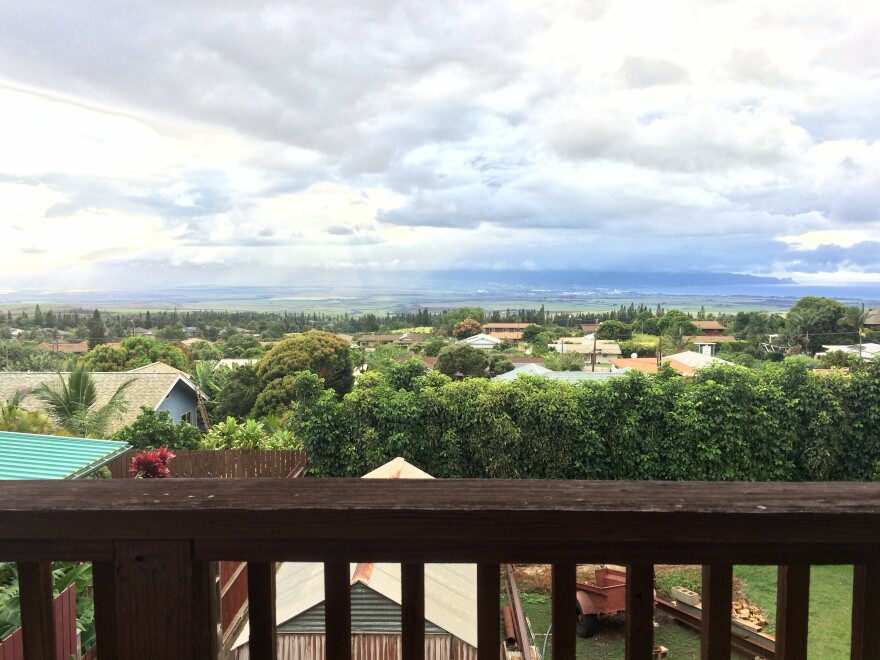Hawaiian Commercial & Sugar Company is closing operations by the end of the year. The legacy of sugar has touched many lives in Hawai‘i. Before the final harvest is in, we’re hearing from a variety of voices. HPR’s Molly Solomon recently spent some time in Maui and has one of those stories.
Tucked away in upcountry Maui on the lower slopes of Haleakal?, Dorothy Pyle meets me outside her home in Makawao.
“By building the house out here and putting it on poles, this is what we get,” said Pyle.

We take in the view from her porch, that looks out toward the West Maui mountains: everything from the K?hei shore to Kahului. She’s spent a lot of time out here watching sunsets, airplanes, and looking out at Hawai‘i’s last 35,000 acres of sugar.
“From a sugar point of view, it’s a tragedy,” said Pyle.
“It’s been green forever, but it’s getting browner and browner. Pretty soon it’s going to be all brown.”
Pyle spent more than 35 years teaching Hawaiian history at the University of Hawai‘i Maui College. She’s lived in the islands since 1967 and met her husband Bill here.
Sugar was always at the root of everything. Even when it came to her house. The sanded slabs of redwood are actually from leftover molasses crates that floated across the Pacific. They’re one of the last remnants of the Paia Mill, which closed on Maui in 2000. Bill was a longtime employee at HC&S who spent weeks waist deep in 30 year-old molasses, taking apart these crates to create the foundation of their home.
“So this is 120-year old redwood that you can’t find anywhere anymore,” she said. “And it’s from the sugar mill.”

Before that, she and Bill lived in a plantation home in Pu‘un?n?. The camps, now long gone, were some of the first homes for waves of immigrants to Central Maui. Pyle says the place would erupt in festivities once a year, after the annual harvest was complete.
“They would have this big plantation wide party that they called their ‘Harvest Home,’ the harvest-has-come-home party,” said Pyle. “It was for the employees, the supervisors — it was really amazing, a lot of fun.”
Looking out at the remaining fields, Pyle points to the smokestacks below.
“That’s actually one of our weather things,” she said, looking down at the mill. “We can tell everyday whether it’s windy down there or not, whether it’s trade winds or Kona, because of the way the smoke’s blowing in the smokestacks.”

All of these are little things that Pyle will soon find missing in her life — the sounds, the smells, the people.
“There is that nostalgia about that community life,” said Pyle. “It’s changing us forever because I will never see 35,000 acres of agriculture again, it just won’t happen. So that whole feel of the island —flying in over these fields and driving through them going to Lahaina — never going to be again.”
For now, she and Bill will enjoy the last few months of green sugar cane, taking it in from their porch while it’s still there.
HPR will continue to air more memories of sugar’s impact in Hawai‘i and its legacy before the final harvest. If you'd like to share your story, we'd love to hear from you! Send us an email with a contact number to get in touch.




